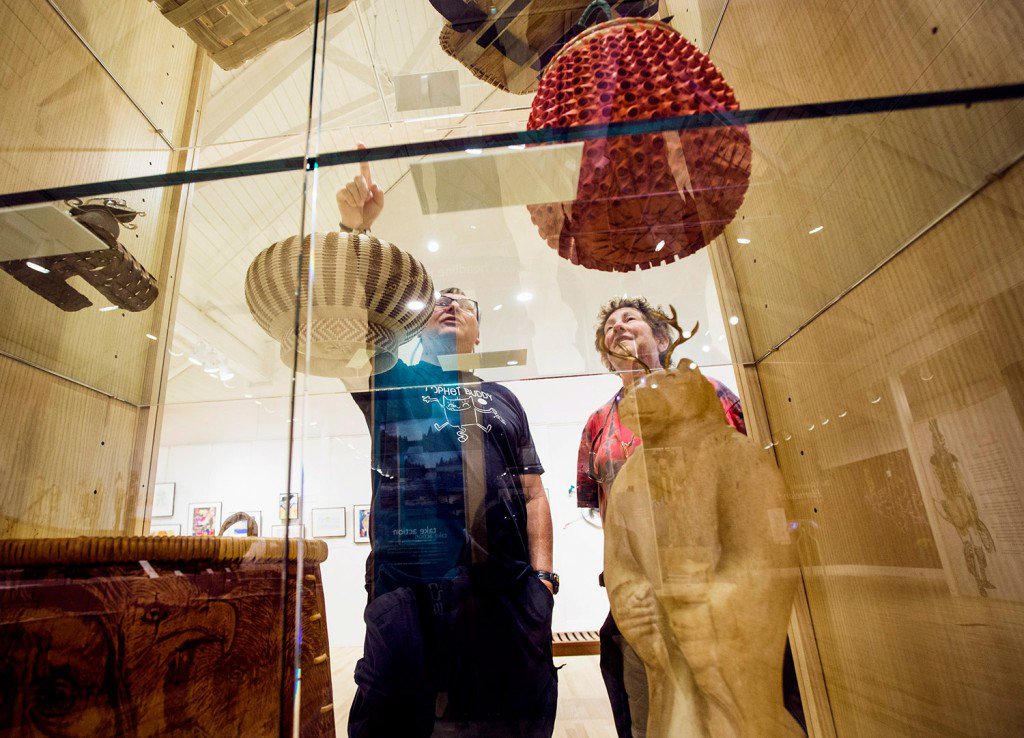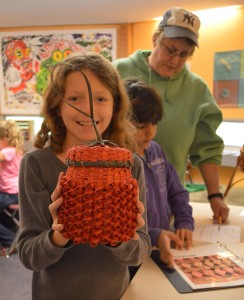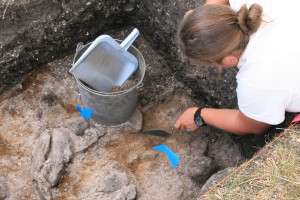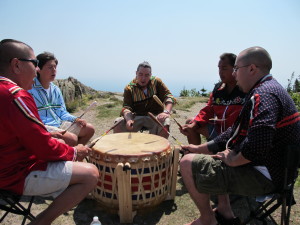The Abbe Museum in Bar Habor, Maine, aims to inspire new learning about Native people in Maine, the Wabanaki, with every visit. Through changing exhibitions, special events and workshops, the museum works with the Wabanaki Nations to share their stories, history and culture with the local community and other visitors. To learn more about their approach, the Coalition recently talked with the museum’s President and CEO Cinnamon Catlin-Legutko.
The question of how Native American history is presented in museums is a historically complicated one, with indigenous communities typically not having much input into exhibitions. How have you approached this issue? How do you define decolonization not only as it relates to the Wabanaki tribes, but as it relates to museums as well?
Amy Lonetree, Ho-Chunk, states in her outstanding publication Decolonizing Museums, that “a decolonizing museum practice must involve assisting (tribal) communities in addressing the legacies of unresolved grief.”
Generally speaking, museums have historically controlled their audiences’ understanding of Native people, sovereignty and culture by leaving Native people and communities out of the planning and processes of museum practices. In the end, there was little to no consultation and collaboration with Native people on exhibits, archaeology, culture, history, fashion, food, music, place names, spirituality, education and much, much more. This practice is certainly evolving, but the museum field has a long road to travel, righting these inequities of the past and planning for a collaborating present and future.
In late 2012, the Abbe Museum Board of Trustees established a Decolonization Initiative Task Force to examine these issues and identify key concepts that underpin the discussions we as a museum were having, including those related to cultural and legal sovereignty, culture, decolonization, colonization, racism, the history of the Abbe Museum and vocabulary/jargon. We examined our own exhibits, programs and governance over the past decade, as well as interviewed several other museums (tribal and non-tribal). We found that while most of them are using decolonized approaches, they are not using the term “decolonization” to describe what they are doing. They also tend to employ those approaches as they relate to their exhibits, but not necessarily to their museum operations. At the Abbe we found it increasingly useful and appropriate to embrace the term, so in 2015 we completed a strategic plan that moved decolonization to the front and center of our new vision statement: The Abbe Museum will reflect and realize the values of decolonization in all of its practices, working with the Wabanaki Nations to share their stories, history and culture with a broader audience.
Your staff went through an extensive dialogue training led by the Coalition. How does your work with dialogue inform these issues? In what ways can dialogue as an interpretative technique help to parse out these questions?
Museum decolonization is a difficult conversation to have. Most of our visitors enter the Museum soaked with stereotypes that are harmful to Native people. And many visitors have a racial bias that they don’t know they have. This makes for uncomfortable conversations all day, every day, at the Abbe.
When I first started working at the Abbe, I picked up on the fact that working on the front line (admissions, gift shop, educational programming) can be really challenging, especially for a Native person. The barrage of visitor questions and observations can be upsetting and harmful so we started to collect them. They included questions like “Are your Indians poor?” and “Can I touch an Indian?” We also received comments such as “Those pictures don’t look like Indians, they look European. There probably aren’t real Indians anymore.”
The list made it clear to us that we were ill-equipped to interact with visitors when they say these things, and were certainly ill-equipped to turn it into an educational moment because it can be very jarring and emotionally disturbing. We needed to respond to these micro-aggressions with poise and skill to be effective. And, we needed to support and protect those who are most harmed by these interactions.
But how? How do you work your way into an educational opportunity when confronted with these types of questions? We have found dialogue facilitation to be an excellent tool in that it helps us move people and groups through important concepts that may be completely foreign to them, and requires personal work and interaction.
Instead of reacting defensively to visitors when they ask the question “Are your Indians poor?”, now we turn the moment into an educational conversation by taking a deep breath and asking a question back, such as “Why do you ask that?” This tactic gives you a moment to collect yourself and learn more about the visitor. If the answer is “That’s how they are at home” or “That’s what I see in the news” you can beg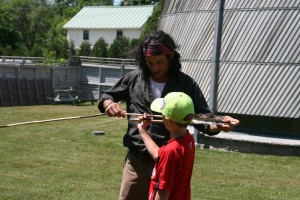 in a conversation where you can add correct information while learning about the visitor and their influences. A well-informed and trained facilitator can guide the visitor through the reasons why poverty persists on reservations and how self-determination is critical to tribal communities and identity.
in a conversation where you can add correct information while learning about the visitor and their influences. A well-informed and trained facilitator can guide the visitor through the reasons why poverty persists on reservations and how self-determination is critical to tribal communities and identity.
We combined this approach with racial bias training, which teaches us how to recognize biases within ourselves and others, empowering us to discuss it and resolve it. Combining this training helps us respond calmly in any given moment and has inspired us to change the design of our educational programming to be proactively dialogic. New for us this year will be daily tours, during the peak season, that include a dialogue-based discussion. We are excited to see where this takes us and will be sure to report results!
How can dialogue be incorporated into other aspects of a museum? For instance, how can exhibitions be activated to engage a community, particularly around these questions of decolonization and integration.
We piloted the Abbe’s first truly dialogue-driven educational program inspired by our exhibit, Kikehtahsuwiw: It Heals, which profiled several women in the Passamaquoddy Tribe, each with a common goal: healing their communities. As the carriers of life, these women are also carriers of culture and are responsible for carrying on their healing traditions. During an evening program, museum educator and exhibit curator George Neptune, Passamaquoddy, led a group discussion focused on the roles of women in Wabanaki and other cultures. A panel of Wabanaki women then talked about how the traditional role of women in Wabanaki cultures informs their contemporary work within the Passamaquoddy community. At the core of this discussion were healing strategies around substance abuse issues and how it is an epidemic in tribal communities.
Perhaps what stood out the most to participants was the way in which the panelists engaged so truthfully in the group discussions – it was one of the most emotional, honest, and successful programs we’ve ever had at the museum, prompting attendees to linger afterward to chat with the staff and panelists. The quality of questions that guests asked spoke to how well they were integrating what they had experienced in their own lives and what they had learned from the discussion. Elizabeth Neptune, one of the members of the Passamaquoddy Tribe, who participated in the program, said,
“The women’s panel and dialogue program was probably my favorite part of the process… The non-Wabanaki participants could really relate to the stories, and were really drawn to specific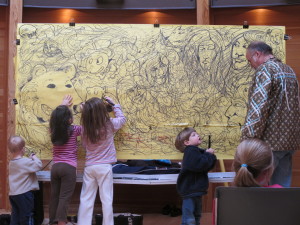 parts of the exhibit, and being able to break away into smaller discussions allowed us to delve into the topic and discuss what it meant to us personally, professionally, how it affected our families, etc. It was really interesting to see how the non-Wabanaki participants didn’t necessarily realize the extent of these issues, what the issues mean and the impact that they have on Wabanaki people.”
parts of the exhibit, and being able to break away into smaller discussions allowed us to delve into the topic and discuss what it meant to us personally, professionally, how it affected our families, etc. It was really interesting to see how the non-Wabanaki participants didn’t necessarily realize the extent of these issues, what the issues mean and the impact that they have on Wabanaki people.”
This program was truly decolonized as it embraced full collaboration with tribal members who offered their indigenous perspectives, and it grappled with difficult history and truth.
The Abbe Museum is a “destination location” in the summertime. In July and August, you see an average of 20,000 tourists (80% of your annual visitation). What challenges does this present? How do your museum educators act as facilitators in helping navigate what must be a wide range of visitors, each with their own assumptions, experiences, and interpretations relating to Native Americans?
Ha! It makes for a crazy couple of months. But, we’re committed to introducing dialogue, whether it’s for a quick museum visit or a pre-registered program. Opening up a dialogue can start with the simple question, “What did you learn about Native people in school?” at the start of a guided tour, when shopping in the museum store, or at the beginning of a scheduled program. It can be followed up with questions about tribal communities in their home state or region.
Our guest services associates who work in admissions and the shops are seasonal and may change from year to year. This makes it difficult to train at a deeper level, but we’re committed to finding a way. We are increasingly explicit in recruitment and application documents, emphasizing our desire to employ individuals who empower visitors to connect with our mission in a profound and tolerant way.
Unlike general debates, dialogue explicitly aims to inspire personal and collective learning. It is conversation turned inward. How have these methods influenced you and members of your staff?
After our first training as a team, I immediately saw a change in how I communicated and how we communicated with each other. We took the time to ask questions and probe deeper. We also had more empathy and patience with each other when we didn’t understand an issue or a concern. Naturally, this helps us understand the visitor more and be more effective in our interactions.
We have also learned that developing the right questions for a program is a large team effort. Not all of us are the best question writers, and when we are, not all of us can write any type of question. So, we’ve created a “Lunch and Dialogue” program for staff only and we’ll begin monthly lunches later this month. We’ll wrestle over a topic, dive into the content a bit and come up with dialogue arcs together. I think it’s going to be a fun exercise and will certainly build confidence in the team.
For more information on the Coalition’s Dialogue Training Programs, click here.
All photos courtesy of the Abbe Museum

